A Festival That Answers the Question, "What Pairs With Asparagus?"
Spargelzeit, Germany's annual "white gold" harvest, is also a great time to ponder wine, life, art, and the splendors of spring.
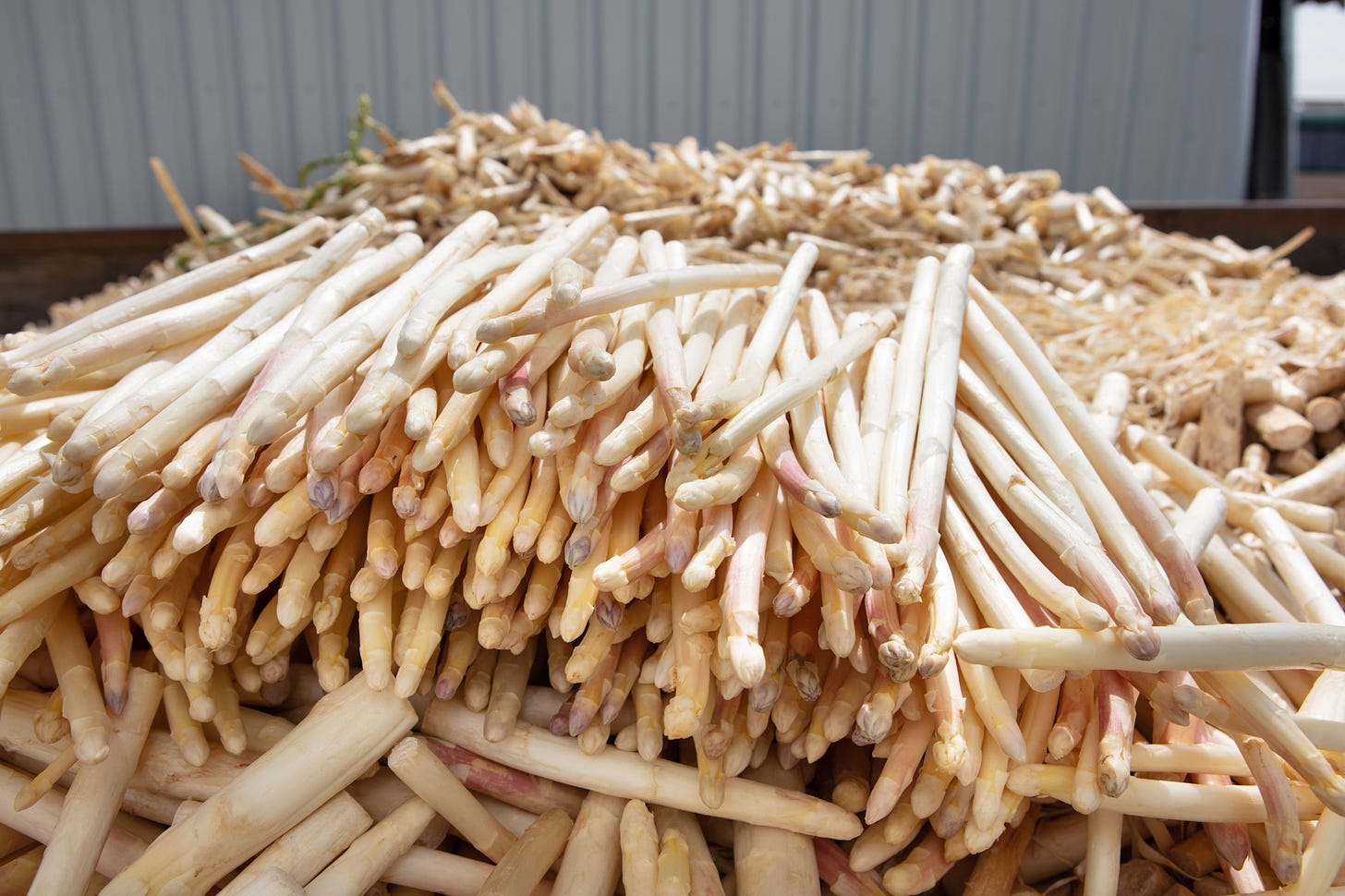
Last May, I went a little asparagus crazy in Germany. It was hard not to get carried away during Spargelzeit, the annual springtime asparagus harvest. As I wrote about in this month’s Travel + Leisure, I visited an asparagus festival in Schwetzingen, Germany, and spent a couple of weekends exploring the little towns that make up the asparagus trail near Heidelberg, along with photographer Alina Stellwagen.
Schwetzingen, a city of almost 22,000, is Germany’s self-proclaimed “asparagus capital.” The vegetable was reportedly first cultivated in the garden of the Baroque Schwetzingen Palace in 1668. During the following centuries, “white gold” morphed into an industry, with the first asparagus festival held in 1904. I met the local Asparagus Queen, who taught me how to harvest white asparagus, I watched an asparagus peeling competition, and I ate asparagus pancakes while listening to plenty of schlager music as the late afternoon slid into a typical small-town German festival.
Unsurprisingly, I ate so much asparagus in so many ways. More surprisingly, I’m not going to make an obvious juvenile bathroom joke. Instead, I will simply quote my winemaker friend who, when I told him I was going to an asparagus festival, replied with German bluntness: “Wow, your pee is really going to stink.”

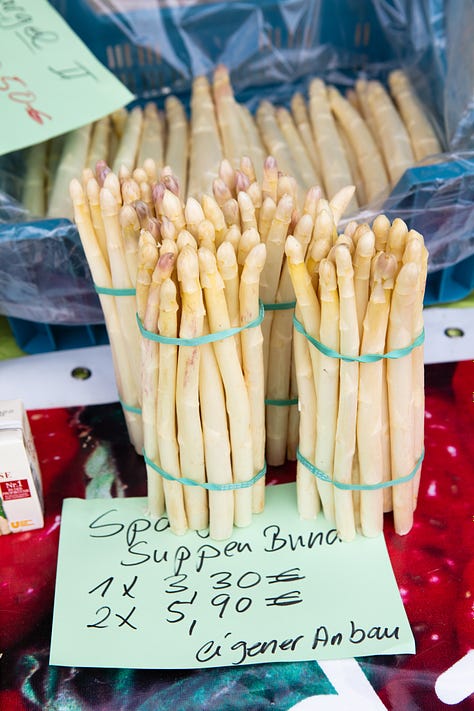
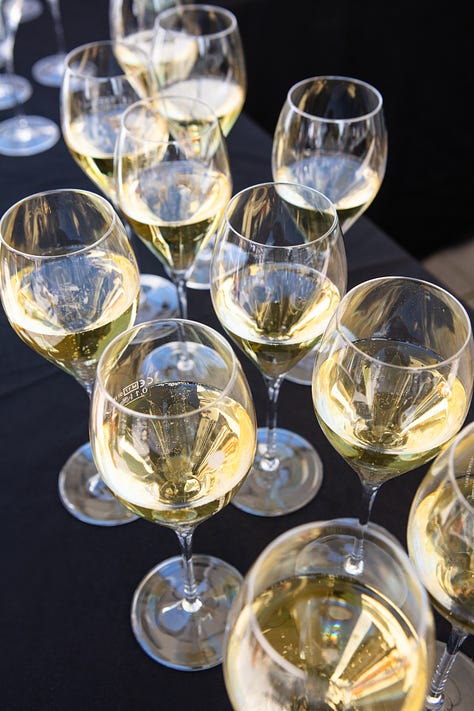

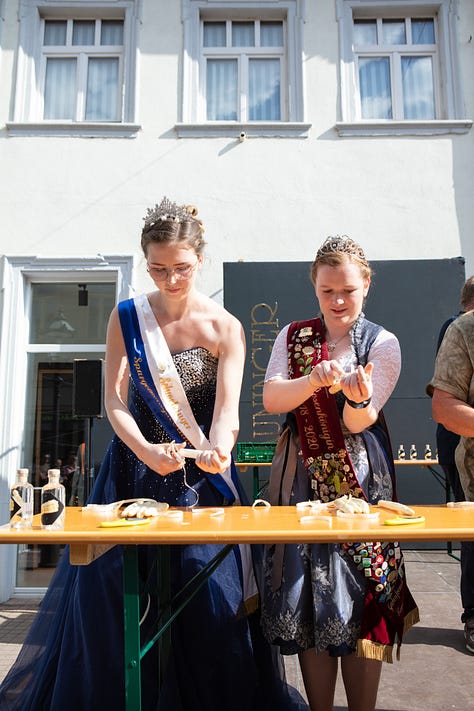
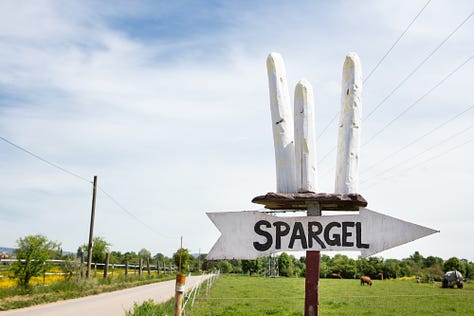
From the Travel + Leisure piece (which I encourage you to read):
By the time I arrived for dinner, I was in a full-on asparagus frenzy. All afternoon, I had been following part of the 84-mile “asparagus trail” that passes through the German state of Baden-Württemberg, stopping at tiny roadside markets marked by giant white plastic models of the vegetable, or hand-painted signs announcing FRISCHER SPARGEL (fresh asparagus). When I got to Simianer Spargelhof, on the outskirts of Hambrücken, I followed a path through rows of dirt mounds, beneath which lay what Germans call “white gold.”
Inside the restaurant, a crowd of diners devoured white asparagus in every preparation imaginable. I sat by myself at the end of a common table; at the other end a large man with red cheeks was tucking in to an enormous plate of schnitzel accompanied by a stack of plump asparagus spears. I ordered asparagus soup, an herb pancake topped with asparagus slices, and, finally, the classic preparation: a half-dozen steamed stalks doused in hollandaise sauce and served with potatoes. The server asked, “Is someone else with you?” When I told her no, this was all for me, she shook her head.
I glanced at my dining companion at the end of the table. “I think I ordered too much,” I said sheepishly. “Eh,” he said, with a shrug. “It’s mostly water anyway.”


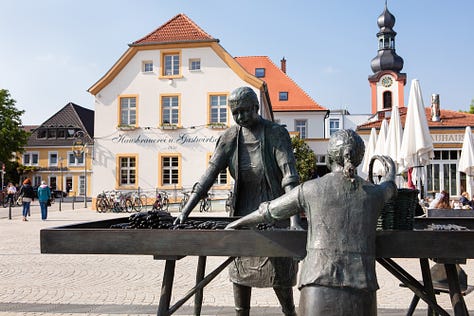
While white asparagus is a homey tradition in Germany, it’s not that common to find at home in the U.S. White asparagus might not be as rare or exotic as, say, a white tiger, but neither is it exactly typical to find in your typical grocery store.
White asparagus is really just regular asparagus that’s been grown under the earth (or some other covering) with no exposure to sunlight—no photosynthesis happens so they never turn green. The white is woodier and more fibrous than the green, and so you have to chop the ends and peel the spears (in Germany people have a special asparagus peeler, but a regular peeler works too). You can put the ends and peels into boiling water for about 15 minutes to create a sort of stock, then remove the bits and drop in the peeled spears, along with salt and lemon juice, to cook for another 10 to 15 minutes. Meanwhile, you can whisk up a quickie hollandaise with egg yolks, lemon juice, some salt and paprika, and lots of melted butter. Germans often serve their Spargel with ham or potatoes.
The result is striking, and so different than the grassy and sweet taste of our typical fresh green asparagus. The taste of white asparagus is more like a cross between a root vegetable, like parsips, and peas. The rich and creamy hollandaise, the traditional dressing, and sprinkled chives blend well with the dish’s delicate earthiness. With all this going on, you want a quieter, lighter wine that takes a step into the background.
Ah yes, the wine. Of course, wine is an crucial part of Spargelzeit. Readers of this newsletter know that I love German wine. Last spring, I published a three-part series on my German wine adventures. (Parts one and two here.)
Asparagus is notoriously one of the hardest foodstuffs to pair with wine. Over the years I’ve heard debates about silvaner or riesling or even Austrian grüner veltliner being the best pairing for asparagus. But I’m here to definitively tell you that the best pairing with white asparagus is actually weissburgunder (which I dealt with here in part 3).



Cocktails.